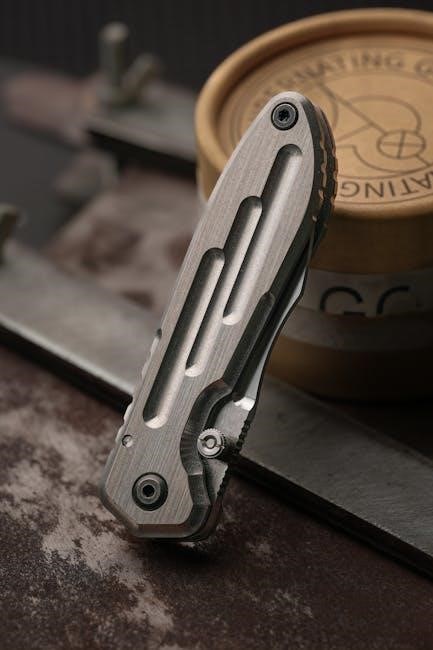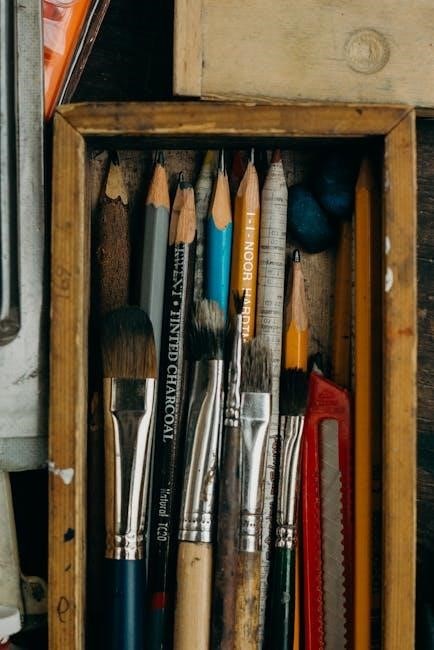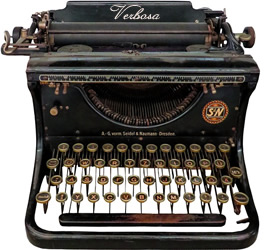The E36 manual swap is a popular modification for BMW enthusiasts, transforming automatic E36 models into manual transmission cars. This swap enhances driving control, performance, and excitement. It requires careful planning, specific parts, and mechanical expertise but offers a more engaging and rewarding driving experience. Ideal for drivers seeking a more connected feel behind the wheel, the E36 manual swap has become a sought-after upgrade in the BMW community.
Overview of the E36 Platform
The BMW E36 is a compact executive car produced from 1990 to 2000. Known for its balanced design, robust build quality, and sporty handling, it became a favorite among enthusiasts. Available in various models like the 318i, 320i, 325i, 328i, and the high-performance M3, the E36 platform offers versatility for both daily driving and performance modifications. Its rear-wheel-drive layout and precise steering make it ideal for drivers seeking a classic yet engaging driving experience. The E36’s timeless appeal has made it a popular choice for tuning and upgrades, including the sought-after manual transmission swap.
Why Perform an E36 Manual Swap?
Performing an E36 manual swap offers a more engaging and immersive driving experience. It provides enhanced control over the vehicle, allowing for precise gear shifts and better connection to the road. Manual transmissions often deliver improved fuel efficiency and lower maintenance costs compared to automatics. Additionally, the swap can increase the car’s performance potential, making it more responsive and fun to drive. For enthusiasts, it transforms the E36 into a more dynamic and driver-focused machine, aligning with BMW’s reputation for delivering exceptional driving experiences.

Necessary Parts for a Successful E36 Manual Swap
A manual transmission, clutch, flywheel, pedal assembly, and hydraulic components are essential for the swap. These parts ensure proper functionality and integration with the E36 chassis.
Manual Transmission Options
Choosing the right manual transmission is crucial for the E36 swap. Popular options include the Getrag 260 (for smaller engines) and the ZF S5-31 (for larger engines like the M3’s S52). These transmissions are known for their durability and compatibility with the E36 chassis. Ensure the transmission is in good condition, with low mileage and proper alignment with your engine specifications; Sourcing a transmission from another E36 or a compatible BMW model is recommended for easier integration. Always inspect the gearbox for wear and leaks before installation to ensure reliability.
Clutch and Flywheel Requirements
A suitable clutch and flywheel are essential for the E36 manual swap. A high-quality clutch kit, including the pressure plate and disc, ensures smooth engagement and durability. The flywheel must be compatible with the manual transmission and engine specifications. Lightweight options are available for improved acceleration. Proper alignment and installation are critical to avoid vibration and noise. The clutch master and slave cylinders must also be replaced or reconditioned to ensure proper hydraulic operation. Always choose components designed for your specific E36 model and engine configuration to guarantee reliability and performance.
Pedal Assembly and Hydraulic Components
The pedal assembly must be replaced to accommodate the manual transmission, typically requiring a three-pedal setup. This includes a clutch pedal, brake pedal, and throttle pedal, ensuring proper driver control. The clutch master cylinder and slave cylinder are critical for hydraulic operation, transferring pedal input to the clutch. These components must be compatible with the manual transmission and engine specifications. Proper installation and alignment are essential to avoid issues like uneven pedal feel or hydraulic leaks. High-quality components are recommended for reliability and performance during the swap.
Electronic and Wiring Modifications
Electronic and wiring modifications are crucial for a smooth E36 manual swap. The car’s ECU must be reprogrammed to recognize the manual transmission, ensuring proper engine and gearbox communication. Wiring harnesses may need adjustments to integrate the clutch pedal and manual transmission sensors. Additionally, the reverse light switch and speedometer must be recalibrated to function correctly with the new setup. These modifications prevent issues like incorrect gear recognition and ensure all systems operate seamlessly. Professional assistance is often recommended for these complex electrical adjustments to avoid potential system malfunctions or errors during the swap process.

Preparation for the Swap
Preparation is key to a successful E36 manual swap. Gather tools, set up a clean workspace, and inspect the chassis for any damage or wear. Ensure all parts are ready and accessible before starting the conversion process.
Tools and Workspace Setup
Setting up the right tools and workspace is crucial for a smooth E36 manual swap. Gather a socket set, wrenches, pliers, and specialized tools like a BMW transmission jack. Ensure a clean, well-lit workspace with a lift or sturdy jack stands for safe access. Organize all parts and tools to avoid delays. Protect the car’s surfaces with covers and prepare for fluid drainage using a drain pan. Proper preparation ensures efficiency and minimizes risks during the swap process. A well-organized workspace and complete toolset are essential for success.
Removing the Automatic Transmission
Removing the automatic transmission is the first major step in an E36 manual swap. Start by disconnecting the battery to prevent electrical issues. Drain the transmission fluid and remove the cooler lines. Next, detach the electrical connectors and shift linkage. Use a transmission jack to carefully lift and support the heavy automatic unit. Remove the mounting bolts and slowly extract the transmission from the chassis. Proper handling and support are vital to avoid damage or injury. This step requires patience and careful execution to ensure a successful swap.
Inspecting and Preparing the Chassis
After removing the automatic transmission, inspect the chassis for any damage or wear. Clean the area thoroughly to ensure a smooth installation. Check the transmission mounts and crossmember for condition and compatibility with the manual setup. Verify that the driveshaft and differential are in good working order. Address any issues, such as leaks or worn components, before proceeding. Proper preparation ensures a secure fit for the manual transmission and prevents future mechanical problems. This step is critical for a seamless and reliable swap.

Step-by-Step Conversion Process
The E36 manual swap involves a methodical sequence of steps, from transmission installation to wiring integration. Each phase requires precision and mechanical expertise for a seamless conversion.
Installing the Manual Transmission
Installing the manual transmission is a critical step in the E36 swap. Ensure the transmission is properly aligned with the engine and secured using the correct mounts. Connect the driveshaft and gear linkage, then bolt the transmission crossmember into place. Verify all connections are tight and aligned correctly to prevent vibration or damage. This step requires careful attention to detail to ensure smooth operation and longevity of the transmission.
Upgrading the Pedal Box and Clutch Master Cylinder
Upgrading the pedal box and clutch master cylinder is essential for the E36 manual swap. Replace the automatic pedal assembly with a three-pedal setup, ensuring proper clutch operation. Install the clutch master cylinder, connecting it to the hydraulic system. Bleed the system thoroughly to remove air bubbles, guaranteeing smooth clutch engagement. Adjust the pedal free play and biting point for optimal performance. This step ensures precise control over the manual transmission, making it a cornerstone of the swap’s success and reliability.
Connecting the Gearbox and Driveshaft
Connecting the gearbox and driveshaft is a critical step in the E36 manual swap. Ensure the driveshaft aligns perfectly with the new manual transmission’s output shaft. Secure the driveshaft to the gearbox, verifying proper fitment and alignment. Inspect the universal joints for wear or damage, replacing them if necessary. Apply grease to the joints for smooth operation. Finally, double-check that the driveshaft is properly balanced to avoid vibrations. Proper installation ensures seamless power transfer from the engine to the wheels, maintaining the car’s performance and reliability. Follow manufacturer guidelines for precise alignment and secure connections.
Wiring and Electrical Integration
Wiring and electrical integration is essential for a seamless E36 manual swap. Modify the wiring harness to accommodate the manual transmission’s electronic requirements. Install a clutch switch to disable the starter motor when the clutch isn’t pressed. Update the ECU to recognize the manual transmission, ensuring proper engine and gearbox communication. Connect the reverse light switch to activate when the car is in reverse gear. Additionally, integrate the gear position sensor if your transmission includes it. Accurate wiring ensures all systems function correctly, preventing electrical faults and enhancing overall performance. Consult a wiring diagram or seek professional help for complex modifications.

Post-Conversion Checks and Adjustments
Post-conversion checks ensure a smooth manual swap. Bleed the clutch system to remove air bubbles, test gear engagement, and adjust the clutch pedal for optimal feel. Inspect all connections and verify electrical systems function correctly. Take the car for a test drive to assess performance, checking for any leaks or unusual noises. Proper adjustments and thorough testing ensure reliability and a satisfying driving experience after the manual transmission swap.

Bleeding the Clutch Hydraulic System
Bleeding the clutch hydraulic system is essential after an E36 manual swap to ensure proper clutch engagement. Use a pressure bleeder to remove air bubbles from the slave and master cylinders. Start by bleeding the slave cylinder, then proceed to the master cylinder. Ensure all connections are secure and use the correct fluid type; Avoid introducing additional air into the system during the process. A helper can assist by pressing the clutch pedal while bleeding. Repeat until the fluid flows cleanly without bubbles, ensuring a precise and responsive clutch operation.
Testing the Transmission and Clutch
After completing the E36 manual swap, test the transmission and clutch to ensure proper operation. Start by checking for leaks and engaging each gear smoothly. Press the clutch pedal to confirm a firm, consistent feel. Test low and high gears, listening for unusual noises. A short test drive will help verify smooth gear engagement and proper clutch function. Monitor the system for any hesitation or slippage. Addressing issues promptly ensures reliability and optimal performance. Professional inspection is recommended if any problems arise during testing.
Ensuring Proper Gear Engagement
Proper gear engagement is crucial after an E36 manual swap. Ensure the clutch pedal operates smoothly and fully disengages. Shift through all gears to confirm smooth, precise engagement. Check for any grinding or hesitation, which may indicate misalignment or incorrect clutch adjustment. Test in both stationary and moving conditions to verify consistent performance. If issues arise, inspect the shifter and gear linkage for proper alignment and connection. Adjustments may be needed to achieve seamless gear transitions, ensuring a responsive and reliable driving experience.

Troubleshooting Common Issues

Common issues during an E36 manual swap include clutch problems, gear engagement difficulties, and electrical faults. Proper diagnosis and adjustments are essential to resolve these issues promptly.
Diagnosing Clutch and Gearbox Problems
Clutch and gearbox issues are common during an E36 manual swap. Symptoms like slipping, noise, or difficulty shifting gears indicate potential problems. Inspect the clutch disc, pressure plate, and release bearing for wear or damage. Check the gearbox for proper mounting and fluid levels. If gears grind or misalign, the synchronizers or bearings may be faulty. Ensure the clutch pedal operates smoothly and the hydraulic system is free of leaks. Early diagnosis prevents further damage and ensures reliable performance after the swap.
Resolving Wiring and Electronic Faults
Wiring and electronic issues are common in E36 manual swaps, often requiring modifications to the ECU and wiring harness. Ensure the clutch pedal switch and reverse light switch are properly connected. Use an OBD-II scanner to diagnose fault codes after the swap. Consult wiring diagrams to verify connections and repin the transmission connector if necessary. Test the system thoroughly to avoid errors. Addressing these faults ensures smooth communication between components, preventing operational issues and maintaining reliability after the swap.
Addressing Leaks and Hydraulic Issues
Leaks and hydraulic issues during an E36 manual swap often stem from the clutch master or slave cylinders, or hydraulic lines. Inspect these components for damage or wear. Replace seals or entire units if necessary. Ensure all connections are secure with new O-rings or gaskets. Bleeding the hydraulic system is crucial to remove air, preventing a spongy clutch feel or gear engagement failure. Use proper tools and follow detailed steps for bleeding. Inspect hydraulic lines for cracks or damage and consider upgrading to stainless steel for longevity. Properly align and install the clutch master cylinder to prevent uneven wear or leaks, consulting manuals or guides for accurate installation.

Benefits of an E36 Manual Swap
The E36 manual swap offers enhanced driving engagement, precise control, and improved fuel efficiency. It provides long-term cost savings and reliability, making it a worthwhile upgrade for enthusiasts seeking a more connected and thrilling driving experience.
Enhanced Driving Experience
A manual swap transforms the E36 into a more engaging and responsive vehicle, offering drivers direct control over gear shifts and acceleration. This upgrade fosters a deeper connection between the driver and the car, delivering a more immersive and exciting driving experience. The ability to manually shift gears allows for precise control, making every drive feel more dynamic and rewarding. For enthusiasts seeking a more interactive and thrilling ride, the E36 manual swap is a game-changer, enhancing both performance and driver satisfaction.
Improved Performance and Control
Upgrading to a manual transmission in the E36 enhances acceleration and handling, providing drivers with greater control over the vehicle. The manual gearbox eliminates torque converter slippage, delivering precise power delivery and crisper shifts. This results in improved responsiveness, especially during spirited driving or on track days. The direct connection between the driver and the car fosters better control, allowing for more precise acceleration and deceleration. Additionally, manual transmissions often weigh less than their automatic counterparts, further improving the E36’s power-to-weight ratio and overall agility.
Cost Savings and Long-Term Reliability
A manual swap can offer significant cost savings and improve long-term reliability. Manual transmissions typically require less maintenance than automatics, with fewer complex components prone to failure. This reduction in parts translates to lower repair costs over time. Additionally, manual transmissions are often more durable and less likely to experience catastrophic failures compared to automatics. For E36 owners, the swap can also enhance resale value, as manual transmissions are highly desired by enthusiasts. Overall, the swap proves to be a cost-effective and reliable modification for the long-term enjoyment of the vehicle.

Additional Considerations
Key factors include wiring harness modifications, budgeting for parts, and sourcing reliable components. Community support and detailed guides are invaluable for a smooth and successful swap experience.
Wiring Harness and ECU Modifications
Modifying the wiring harness and ECU is critical for a seamless E36 manual swap; The automatic transmission relies on specific wiring and ECU programming, which must be adjusted to recognize the manual gearbox. This includes rewiring for clutch and gear position sensors. A custom wiring harness may be required to integrate the manual transmission components. Additionally, the ECU must be reprogrammed to remove automatic transmission dependencies and ensure proper operation with the manual setup. These modifications prevent issues like stalling or incorrect gear recognition, ensuring a smooth transition to manual control.
Budgeting and Sourcing Parts
Budgeting for an E36 manual swap requires careful planning to ensure affordability without compromising quality. Key components like the transmission, clutch, and pedal assembly can be sourced from reputable suppliers or salvage yards. Prices vary widely, so researching and comparing options is essential. Online forums and communities often provide valuable insights and recommendations. Additionally, setting aside funds for unexpected expenses, such as wiring or ECU modifications, helps avoid financial strain. Sourcing parts from trusted sellers ensures reliability and compatibility, making the swap both cost-effective and successful in the long run.
Community Resources and Support
The BMW E36 community offers extensive support for manual swaps, with numerous online forums, DIY guides, and YouTube tutorials. Enthusiasts and mechanics share their experiences, offering valuable advice and troubleshooting tips. Many forums host detailed step-by-step guides and parts lists, while social media groups provide real-time assistance. Additionally, local car clubs and meetups often connect enthusiasts, fostering collaboration and knowledge exchange. These resources make the swap more accessible and help ensure a smooth, successful transition to a manual transmission.

